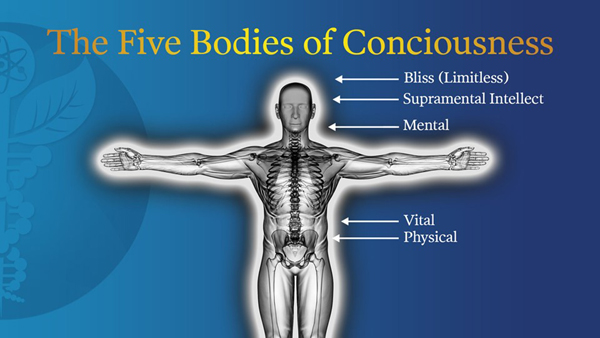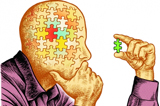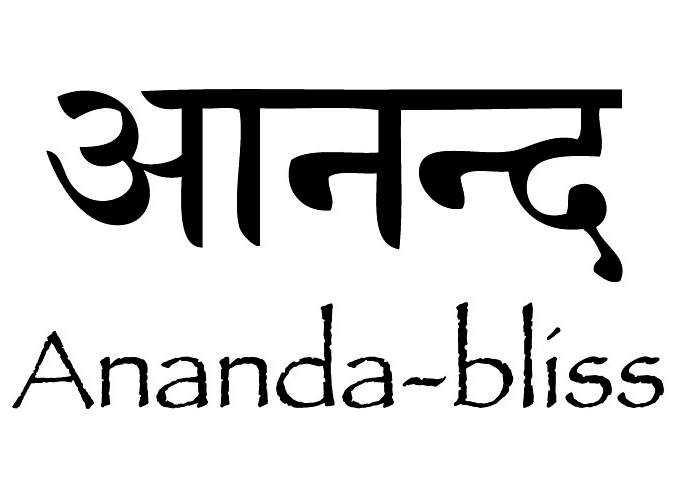Consciousness and health
Working through the vital
Abstract
A majority of people believe that by following a particular system of self-improvement or yoga, they will be able to overcome the vital and baser parts of their being. However, despite various psychological and spiritual practices, these parts throw up a robust resistance. In such a scenario, there often comes a split wherein the person experiences spiritual insights in the meditative state but his waking consciousness remains stagnant. If unresolved, this split leads to a relapse and sabotages the evolution of consciousness. Sri Aurobindo and The Mother emphasised that the vital must not be suppressed or ignored and that there is a need to work through it systematically. This paper is based upon the author’s psychotherapeutic experience of helping people work through their vital part by following the principles of Integral Yoga.
Right from the time when we gain some self-awareness, there comes up an aversion with one or more aspects about ourselves. It could be an annoying habit, a negative emotion, a self-destructive behaviour, a disturbing relational pattern or a stubborn part of ourselves. We conclude that we would be better without it and decide to bring the required modification. We take a decision, chart out a plan to bring the necessary change and start working on it. Very soon, we realise that either the change does not happen or we relapse into the old ways of being. We often wonder that despite the best of efforts what went wrong. The Mother explained that this happens because there is a part within us that vehemently resists change.
“If you look sincerely, you will see that you have decided that it will be like this, and then, beneath there is something which has not decided at all and is waiting for the second of hesitation in order to rush forward (1).”
While various parts of our being can throw different kinds of obstacles on the spiritual path, the vital stands out in its vehement resistance. The vital is the instinctive life-nature, consisting of energy, desires, emotions, impulses and passions. It is characterised by hedonism, a relentless craving for pleasures and possessions and a persistent wish to avoid even the most minor frustrations. Consequently, under the influence of the vital we experience the entire gamut of emotions ranging from enthusiasm, excitement, restlessness to sadness, rage and emptiness. The vital tries to dominate us most of the time by pressurising the mind to come up with reasons that justify all its feelings and demands. This collusion between the vital and the mind silences the voice of our psychic being, which seeks spiritual evolution. The psychic being is the dynamic representation of the soul, a spark of the divine consciousness within us that seeks to integrate, transform and evolve different parts of our being in order to support the manifestation of divinity in life. However, due to the influence of the vital, our consciousness remains preoccupied with baser and trivial pursuits and is unable to realise its enormous spiritual potential.
A majority of seekers give up their spiritual quest when faced with this challenge. Either they blame themselves for being unfit or they feel let down that the Divine is not helping them enough. There are others who hope that maybe things will automatically get better later in this life or in the next life. However, Sri Aurobindo observed that this attitude of passivity and self-degradation is a major impediment in our spiritual evolution. He believed that there is hope once we adopt a fervently active and conscious effort when dealing with ourselves. Therefore, we need to devote ourselves wholeheartedly to understand and deal with our vital part. In my work as a psychologist, I have found the following methods based on Sri Aurobindo and The Mother’s teachings to be extremely useful in working through the vital.
Self-observation
A large part of our life is dominated by the vital’s influence, but most of the time we are unaware about it. This happens because we have not developed the skill to observe ourselves carefully. Our attention is usually centred outside trying to understand and master the external world and in the process we ignore our inner world. We can work through the vital part only when we hear its voice clearly, understand its functioning the manner in which it pressurises the other parts of our being.
Throughout the day, different parts of our being express themselves and demand attention and in response to it our consciousness shifts and identifies with them. Our understanding of who we are and what we want is in a constant flux. A dedicated self-observation can gradually increase our awareness of the different parts within us including the vital. The easiest way to do this is to find out with which part of our being the ‘I’ consciousness has identified in a given moment. Throughout the day and the night, we should pay attention to this ‘I’ consciousness and its voice. Slowly, we will be able to see our vital clearly, and comprehend its functioning. Once this happens, there can be several possibilities to work through the vital.
Disidentification
As we observe the vital more and more, we come across an interesting phenomenon. The vital is so powerful that when it expresses itself, it grabs our complete attention and we end up feeling one with it. We feel what the vital feels, we want what the vital wants and we oppose whatever the vital hates. Under the spell of the vital, people often use the expression ‘but that’s me’ to justify and sanction any type of action, impulse or feeling. Although this identification seems to be very self-soothing in the short-run, it reinforces all the hedonistic and narcissistic phenomena in our consciousness and therefore sabotages our progress.
Therefore, as soon as we start seeing and hearing our vital clearly, we need to cultivate the habit of stepping back and disidentifying from it. This can be done by telling ourselves that what we see is not our whole being but a very tiny part and therefore we must not let it overrule us. We may use a small visualisation technique where we can visualise ourselves as an ocean. The vital part is the surface where waves are moving in a volatile and forceful manner and beneath the surface there is deep and calm water that represents our psychic being. While holding this image in our mind and feeling its vibrations, we need to reflect on the fact that we are the deeper part and in a moment of self-forgetfulness have identified with the surface part as our complete being.
It may seem very challenging in the beginning because we are used to being dominated by the vital. But gradually with persistent effort, we can develop the strength to keep the vital at a distance. This gives us a choice for feeling, thinking and acting from a deeper layer of consciousness.
Aspiration
“... you may have an aspiration in the vital; if you have desires or troubles, storms, inner difficulties, you may aspire for peace, to be quite impartial, without desire or preference, to be a good docile instrument without any personal whims, always at the Divine’s disposal(2).”
The next step is an aspiration, which is a will to find, live and finally be the truth. This involves making a firm and concentrated resolve to work through the vital and rise above baser instincts. The aspiration is not just a mental decision, but a call from our psychic being for a deeper existence which then permeates in the vital and seeks reformation. When this aspiration persists in the foreground of our consciousness, it can serve as a constant guide. It is best to make a three-layered aspiration. Firstly, one must will to restrain the expression of the negative in one’s actions, feelings and thoughts. Usually, people believe that by just aiming to purify their actions, they will be able to change themselves. However, from a spiritual point of view, one’s undesirable thoughts and feelings are as hazardous as a negative behaviour in pulling down the consciousness.
Secondly, besides resolving to restrain the negative, we must also aspire to nurture the complementary positive within us. For instance, if we are very angry then, besides desiring to not be angry, we must will to be peaceful, loving and forgiving. This ensures that when the negative is being surpassed a vacuum does not come up within us and the force of the positive enhances our power. Thirdly, our aspiration must not be limited to just becoming a better person, but the goal should be to alter oneself in such a complete manner that one becomes fit to be used as a faithful instrument in the Divine agenda. This type of aspiration ensures that we do not become contented with a minor degree of self-improvement, but continue to march ahead in our yoga till we are able to bring down the divine Light into our being.
An aspiration can be made stronger by repeatedly remembering and concentrating on it. We need to find ways to remember it for the duration of the day and the night. Beginning our day by recollecting our aspiration and praying that all contemplations, feelings and exercises that we carry out must be in line with it can be extremely helpful. While going to bed, we can once again summon our desire, with a petition that its fire ought not to be diminished during our sleep. Likewise, throughout the day we must sincerely call on our aspiration to take the central position in our consciousness.Just as we put multiple reminders in different places if we have an important task to finish, we could use the same technique to remind ourselves of the aspiration. For instance, we can put a screen saver on our laptop, a message in our car, a small note at visible places in our house. By seeing this aspiration many times during the day we are more likely to remember and call upon it.
Effort
Once the aspiration has been made strong by repetitive concentration, we need to exercise our effort to materialise it. This can be done by using our aspiration as a constant guide and placing before it all our feelings, thoughts, needs, desires and actions. At each moment, one needs to ask oneself whether these are in line with our aspiration or they contradict it. If they support our aspiration, we must express and reinforce them, but if they oppose it then we need to reject them. During these moments we can talk to the vital politely but firmly as one would talk to a child explaining that its movements are self-destructive and sabotaging our greater good. We can convince it to change by explaining how it will also feel joyful in the long run once our consciousness grows.
The most powerful way to work through the vital is to repeatedly offer its negative movements to the Divine with a prayer that they should be converted and complementary positive movements should be strengthened. Through these various steps, the vital gives up its resistance and starts surrendering to the higher influence. But even then, there are times when we are exhausted, depressed, relaxed or ecstatic and we feel like letting ourselves go. During those moments, we need to be even more vigilant and exercise a stronger effort so that the negative movements are unable to find an excuse to reassert themselves. The goal should be to observe perfect sincerity in our effort at all times and under all circumstances.
“Do you know what perfect sincerity is? ... Never to try to deceive oneself, never let any part of the being try to find out a way of convincing the others, never to explain favourably what one does in order to have an excuse for what one wants to do, never to close one’s eyes when something is unpleasant, never to let anything pass, telling oneself, ‘That is not important, next time it will be better (3).’“
Nourishment
According to the Integral Yoga, everything within us whether big or small, base or refined has the potential of evolving and becoming divinised. Thus, the vital need not be looked at just as an impediment that has to be plucked out and thrown away. An integral way of dealing with it is through love, nurturance and implicit faith that it too has the potential to evolve into something beautiful, pure and blissful. The vital cannot abide boredom and always seeks intensity. When providing nourishment to the vital, we are prone to regress in our consciousness and find pleasure in things that we otherwise abhor. We often overlook the fact that the sensory delight can also be derived from higher and purer sources and that the vital can be trained to accept and relish this pleasure. The Mother assured us that the vital has the potential of getting attracted to something beautiful, heroic and divine and can open itself and surrender completely.
Therefore, we should actively engage our vital in various creative and spiritual pursuits which have a higher vibration and provide it with nourishment. Thus, the vital will slowly start enjoying the refined form of pleasure and give up the crude forms. Then one day it may get drawn to the great pleasure of being the instrument of the Divine and furthering the Divine agenda.
“Thus trained, Desire, that great unquiet harasser and troubler of man and cause of every kind of stumbling, will become fit to be transformed into its divine counterpart. For desire and passion too have their divine forms; there is pure ecstasy of the soul’s seeking beyond all craving and grief, there is a Will of Ananda that sits glorified in the possession of the supreme beatitudes (4).”
Conclusion
The crucial thing to remember is that an automatic, magical conversion of the vital is unlikely to come by. We need to make a consistent effort over a long period of time to observe and understand the vital and its functioning. Thereafter, we can distance ourselves from its grip through disidentification, aspiration and effort. One must remember that, the vital too has the potential to evolve and this can be realised by offering it higher forms of nourishment.
References
1. The Mother. Collected Works of the Mother, Volume 6. 2nd ed. Pondicherry: Sri Aurobindo Ashram Trust; 2003, p.347.
2. The Mother. Collected Works, Volume 5, 2003, p. 293.
3. The Mother. Collected Works, Volume 6, Pondicherry 2003, pp.132-3.
4. Sri Aurobindo. Birth Centenary Library, Volume 20. Pondicherry: Sri Aurobindo Ashram Trust; 1970, p.78.
Pulkit Sharma is a clinical psychologist, spiritual therapist and writer based in Pondicherry.
Share with us (Comments,contributions,opinions)
When reproducing this feature, please credit NAMAH,and give the byline. Please send us cuttings.








